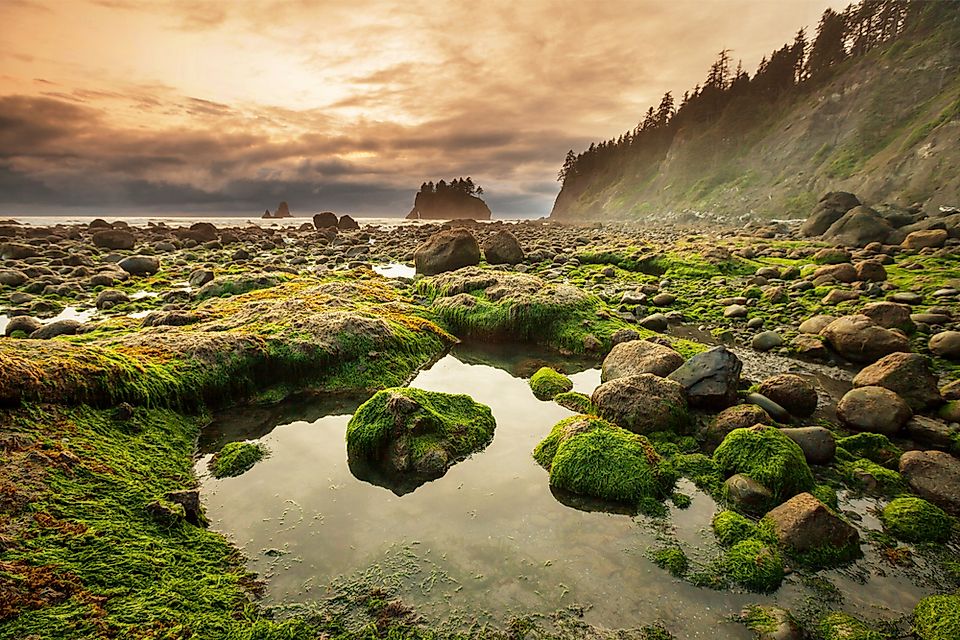The National Parks of Washington, USA

The state of Washington is located in the Pacific Northwest region of the United States, and covers a total area of 71,362 square miles. It shares a border with Idaho (east), Oregon (south), the Pacific Ocean (west), and Canada (north). The state is home to three national parks: Olympic, North Cascades, and Mount Rainier.
3. Olympic National Park
Olympic National Park encompasses an area of 922,650 acres in the northwest corner of Washington state, on the Olympic Peninsula. The park is also a UNESCO International Biosphere Reserve and is home to 4 distinct ecoregions: temperate rainforest, Pacific coast, alpine mountains, and drier forests. The park's temperate rainforest receives approximately 150 inches of rain annually, which supports the growth of western hemlock, Sitka spruce, and Douglas fir trees. The rugged coastal region stretches for 60 miles, with some sections covered in sand and others covered in rocks and driftwood. The Olympic Mountains are located in the central region of the park, and the high elevation promotes the formation of glaciers.
The geographic makeup of the park has effectively isolated many of its regions from the rest of the state. This isolation has lead to the evolution of several endemic plant and animal species, providing researchers with an opportunity to study the evolutionary process. Some of these endemic species include: Piper’s bellflower, Olympic yellow-pine chipmunk, Olympic grasshopper, and Olympic ermine.
2. North Cascades National Park
North Cascades National Park covers an area of 504,781 acres in the larger North Cascades National Park Complex, which includes national forests and recreational area. The national park is located in the north-central region of Washington state. Most of the park is covered in the North Cascades Mountain range, which includes some of the highest mountain peaks in the lower 48 states. Additionally, North Cascades National Park is home to more than 300 year-round glaciers and just as many lakes. The park's rough terrain helped protect it from development prior to being designated as a national park in October 1968.
Given the rapid change in elevation, the park has a number of ecological habitats that attract a wide range of plant and animal species. Large, old growth forests are located at the lowest elevations, below the mountains, while alpine habitats exist at the highest elevations of the mountains. The national park is also home to 200 bird species, 75 mammal species, 28 fish species, and 7 reptile species.
1. Mount Rainier National Park
Mount Rainier National Park covers an area of 236,381 acres and is located in the central region of Washington state. The park's most well-known feature is the 14,411-foot tall Mount Rainier, which is the highest peak in the Cascade Mountain range. The national park is also home to large expanses of old-growth forests, as well as subalpine meadows. Additionally, it is home to 25 year-round glaciers. Mount Rainier National Park holds the distinction of being the first national park designated from a national forest. Its untouched wilderness area is rich in biodiversity, including the following animal species: black bear, bald eagle, porcupine, harlequin duck, cougar, and snowshoe hare. The park is popular among tourists who visit for hiking, wildlife viewing, and mountain climbing activities.











